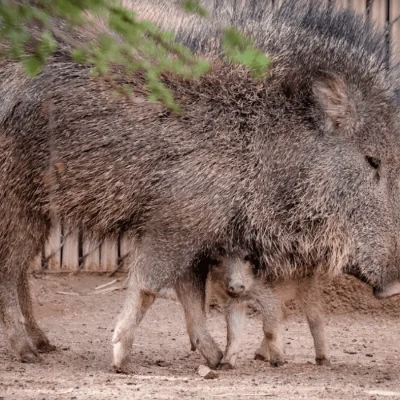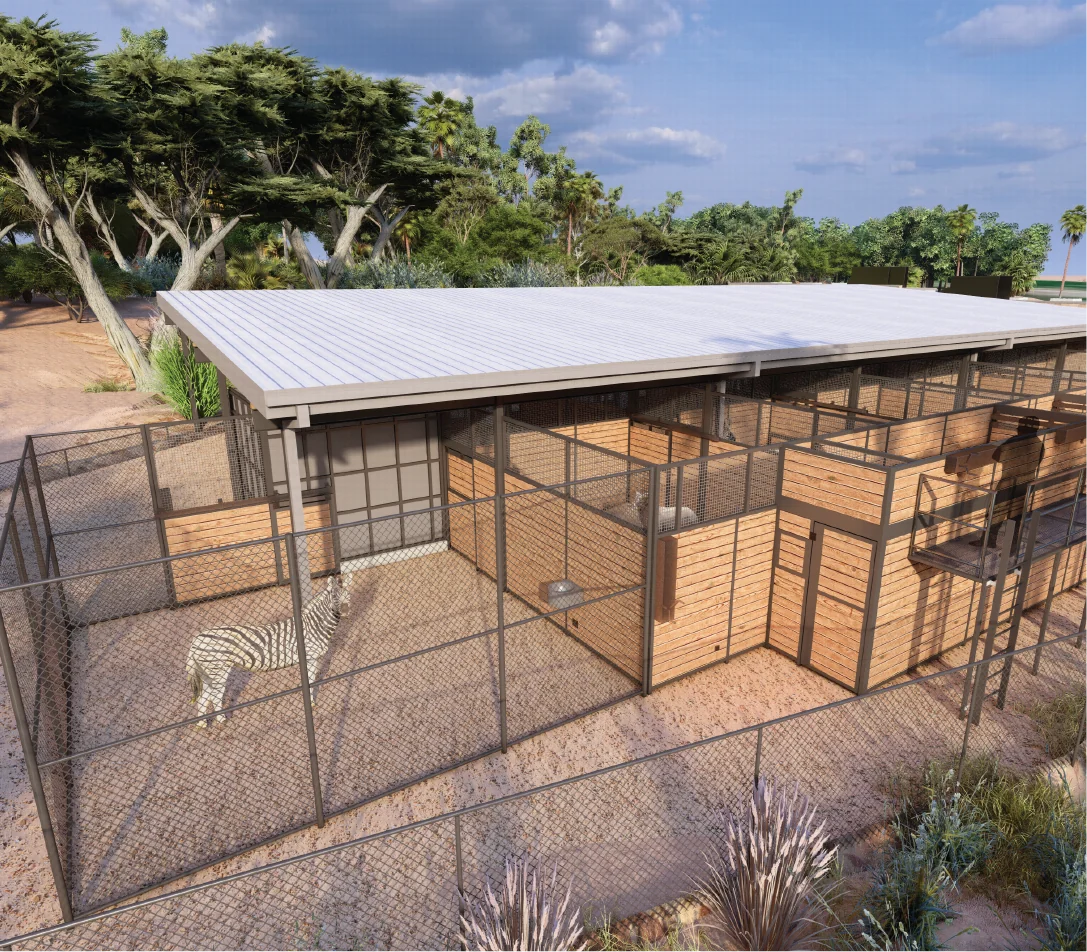So Adorable:
Meet the First Chacoan Peccary
born at the Zoo since 2014
Meet the First Chacoan Peccary born at the Zoo
since 2014

In early September, we had a young Chacoan peccary (or “tagua”) born to parents Pebbles and Cheerio on our Chacoan peccary habitat on the Tropics Trail! And on September 18, we had two additional young Chacoan peccary (or “tagua”) born, this time to parents Trix and Cheerio. Trix (yes, there really is a breakfast cereal naming theme) is the second of the two females that arrived from San Diego and were introduced to our herd as a Species Survival Plan (SSP) breeding recommendation earlier this year.
In fact, these are the first births of this species at the Phoenix Zoo since 2014 and it marks our return to active participation in breeding
per SSP recommendations.
The Chacoan peccary was first described by western science in 1972. The wild population was very small and extremely localized to
the Chaco region of Paraguay. Rapid agricultural expansion in the Chaco region posed a serious threat to this little known species. So, in 1986 the government of Paraguay, in partnership with the San Diego and Lincoln Park Zoos as well as other stakeholders established
”Proyecto Tagua”. This project established a captive herd in Paraguay to serve as a reservoir population for reintroduction attempts and
to allow research on this poorly understood species.
By the early 1990s, this captive herd had grown in size to the point where more space was needed. The decision was made to transfer animals to an additional remote location in order to establish a separate captive population as insurance against catastrophic loss in the extremely localized Chaco population. The Phoenix Zoo became involved with Proyecto Tagua at this point through financial support of the
in situ research in Paraguay and by serving as the initial location for the first population of Chacoan peccaries outside of Paraguay.
Phoenix was chosen as the site for this first group of animals due to the similarity of climate to the peccaries’ native Chaco region and the Zoo’s ability to hold PPEQ animals. In 1992, planning began for importing Chacoan peccaries to Phoenix. This proved to be a very challenging project, but in 1996, 3.7 Chacoan peccaries arrived at the Phoenix Zoo. They reproduced readily and eventually animals were transferred to other North American zoos and to Europe. The Phoenix Zoo has continued to be involved in Proyecto Tagua through
financial contributions and conservation grants.
Our newest arrivals along with the rest of the herd is visible at the Chacoan peccary exhibit on the Tropics Trail (next to Galapagos tortoises) so stop by and enjoy the cuteness!
In early September, we had a young Chacoan peccary (or “tagua”) born to parents Pebbles and Cheerio on our Chacoan peccary habitat on the Tropics Trail! And on September 18, we had two additional young Chacoan peccary (or “tagua”) born, this time to parents Trix and Cheerio. Trix (yes, there really is a breakfast cereal naming theme) is the second of the two females that arrived from San Diego and were introduced to our herd as a Species Survival Plan (SSP) breeding recommendation earlier this year.
In fact, these are the first births of this species at the Phoenix Zoo since 2014 and it marks our return to active participation in breeding
per SSP recommendations.
The Chacoan peccary was first described by western science in 1972. The wild population was very small and extremely localized to the Chaco region of Paraguay. Rapid agricultural expansion in the Chaco region posed a serious threat to this little known species. So, in 1986 the government of Paraguay, in partnership with the San Diego and Lincoln Park Zoos as well as other stakeholders established “Proyecto Tagua”. This project established a captive herd in Paraguay to serve as a reservoir population for reintroduction attempts and to allow research on this poorly understood species.
By the early 1990s, this captive herd had grown in size to the point where more space was needed. The decision was made to transfer animals to an additional remote location in order to establish a separate captive population as insurance against catastrophic loss in the extremely localized Chaco population. The Phoenix Zoo became involved with Proyecto Tagua at this point through financial support of the in situ research in Paraguay and by serving as the initial location for the first population of Chacoan peccaries outside of Paraguay.
Phoenix was chosen as the site for this first group of animals due to the similarity of climate to the peccaries’ native Chaco region and the Zoo’s ability to hold PPEQ animals. In 1992, planning began for importing Chacoan peccaries to Phoenix. This proved to be a very challenging project, but in 1996, 3.7 Chacoan peccaries arrived at the Phoenix Zoo. They reproduced readily and eventually animals were transferred to other North American zoos and to Europe. The Phoenix Zoo has continued to be involved in Proyecto Tagua through financial contributions and conservation grants.
Our newest arrivals along with the rest of the herd is visible at the Chacoan peccary exhibit on the Tropics Trail (next to the Galapagos tortoises) so stop by and enjoy the cuteness!






